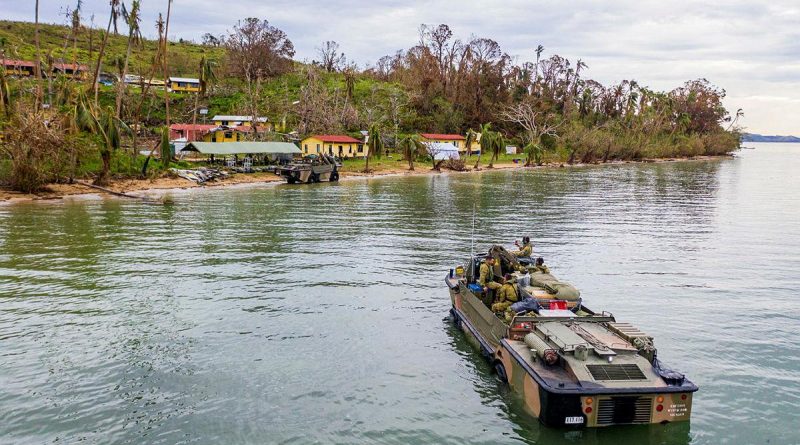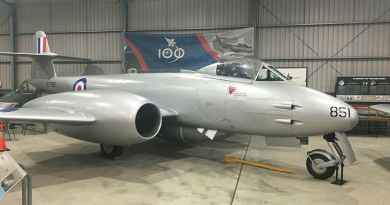Sailor explains intricacies of amphibious landings
Share the post "Sailor explains intricacies of amphibious landings"

HMAS Adelaide showcased its sophisticated amphibious deployment systems during Operation Fiji Assist, transporting more than 400 tonnes of disaster relief supplies from ship to shore in cyclone-affected areas.
CAPTION: Soldiers from the 10th Force Support Battalion drive a light amphibious resupply cargo 5 onto the island of Galoa, in Fiji to drop off supplies required to repair buildings affected by Cyclone Yasa. Photo by Corporal Dustin Anderson.
Leading Seaman James Rollo said operational success came down to Adelaide’s capable platform for staging and deploying amphibious assets.
“With a fully functioning NATO-compatible well dock, Adelaide can carry up to four landing craft,” Leading Seaman Rollo said.
“It also provides the ability to launch additional amphibious watercraft like lighter amphibious resupply cargo 5 tonne and Zodiacs.”
These landing craft allowed Adelaide to move large equipment, including heavy vehicles and supplies on shore that could not be transported by rotary wing.
“Since the craft can carry a decent amount of weight we were able to deploy and project them to various landing sites around Fiji,” Leading Seaman Rollo said.
“Landing craft are designed to beach on the shore.
“Many of the sites had coral reefs, rocks and other potential obstructions, which were impenetrable to the landing craft.”
This made the light amphibious resupply cargo vehicles a key factor in mission success.
Vehicle Operator Private Tyrell Zealey said as a combination of a car and boat, it could go places most landing craft could not.
“They can go from water, over rocks and onto land,” he said.
“And if we do encounter rocks they will hit the wheel before the hull so they’re not a problem.”
For islands surrounded by coral, every effort was made to minimise damage to the reef from the vehicles.
“Environmental impact is a deciding factor for landing sites,” Private Zealey said.
“We had to plot a route that went from sand to water, avoiding any damage to the reef.
“We then worked to plot a better route during the operation where amphibious elements travelled more than 1000nm (1800km), carried more than 300 personnel, transported more than 30 vehicles, conducted more than 60 beachings and spent more than 180 hours under way.”
.
.

.
.
Share the post "Sailor explains intricacies of amphibious landings"





